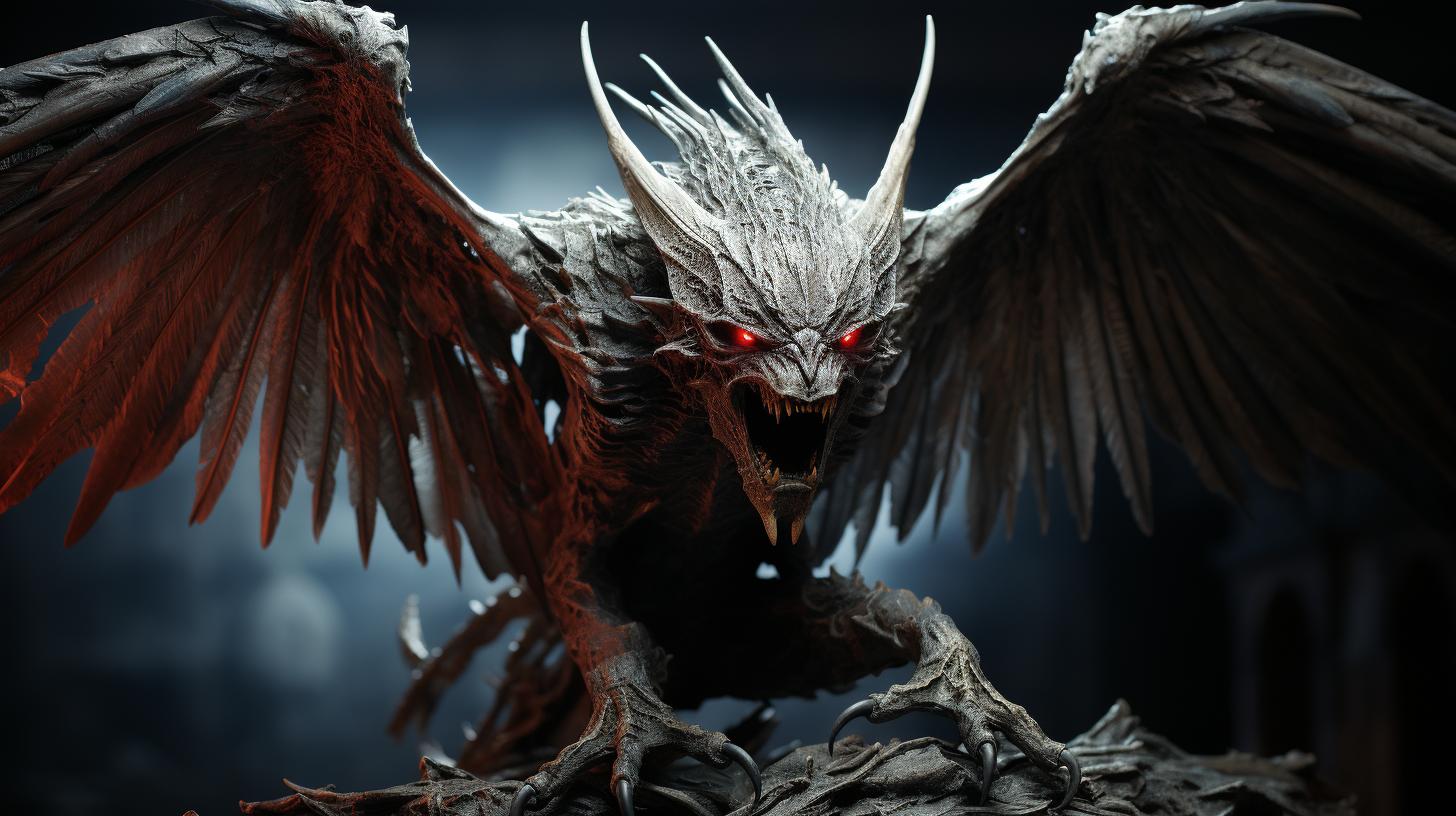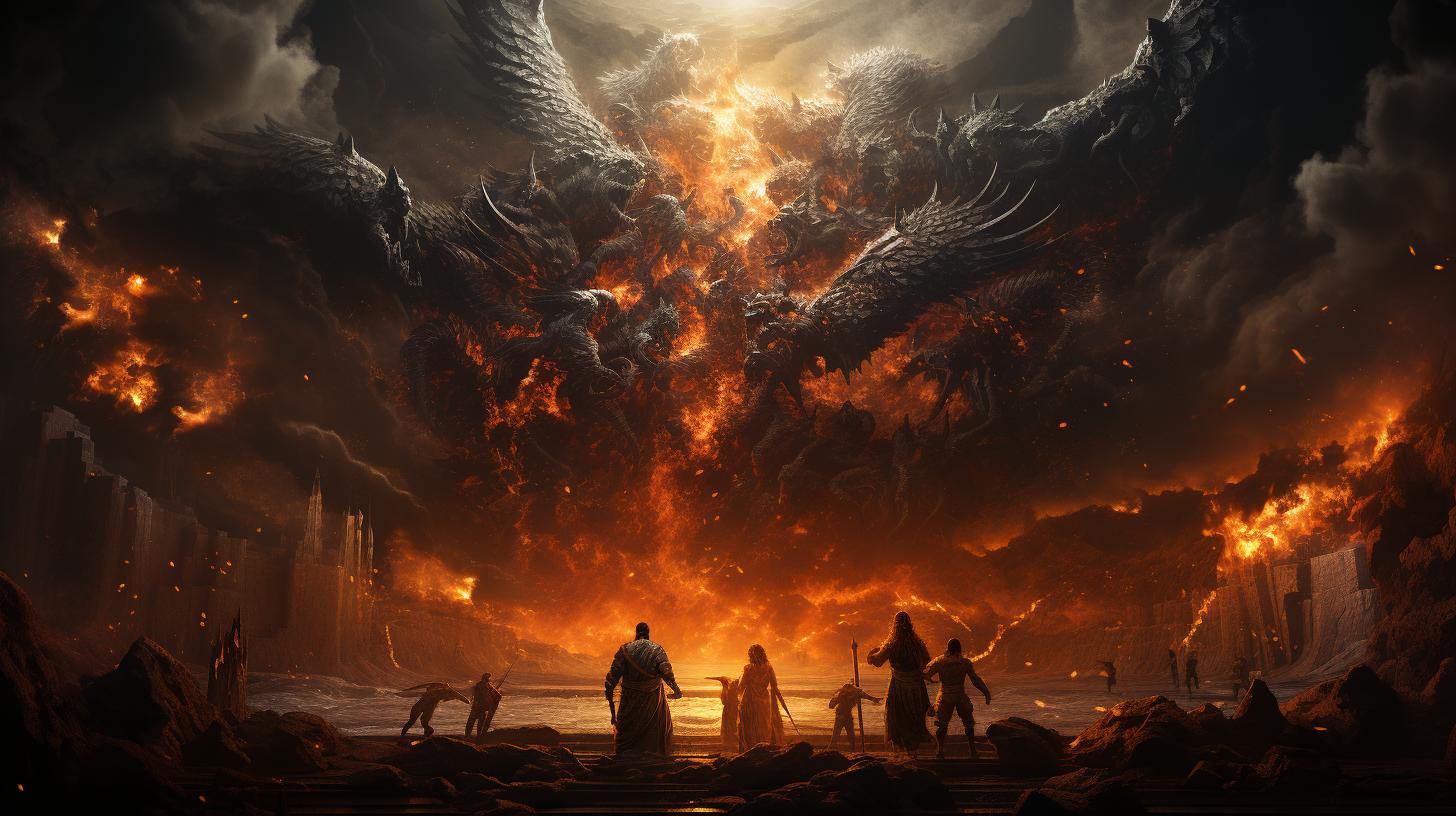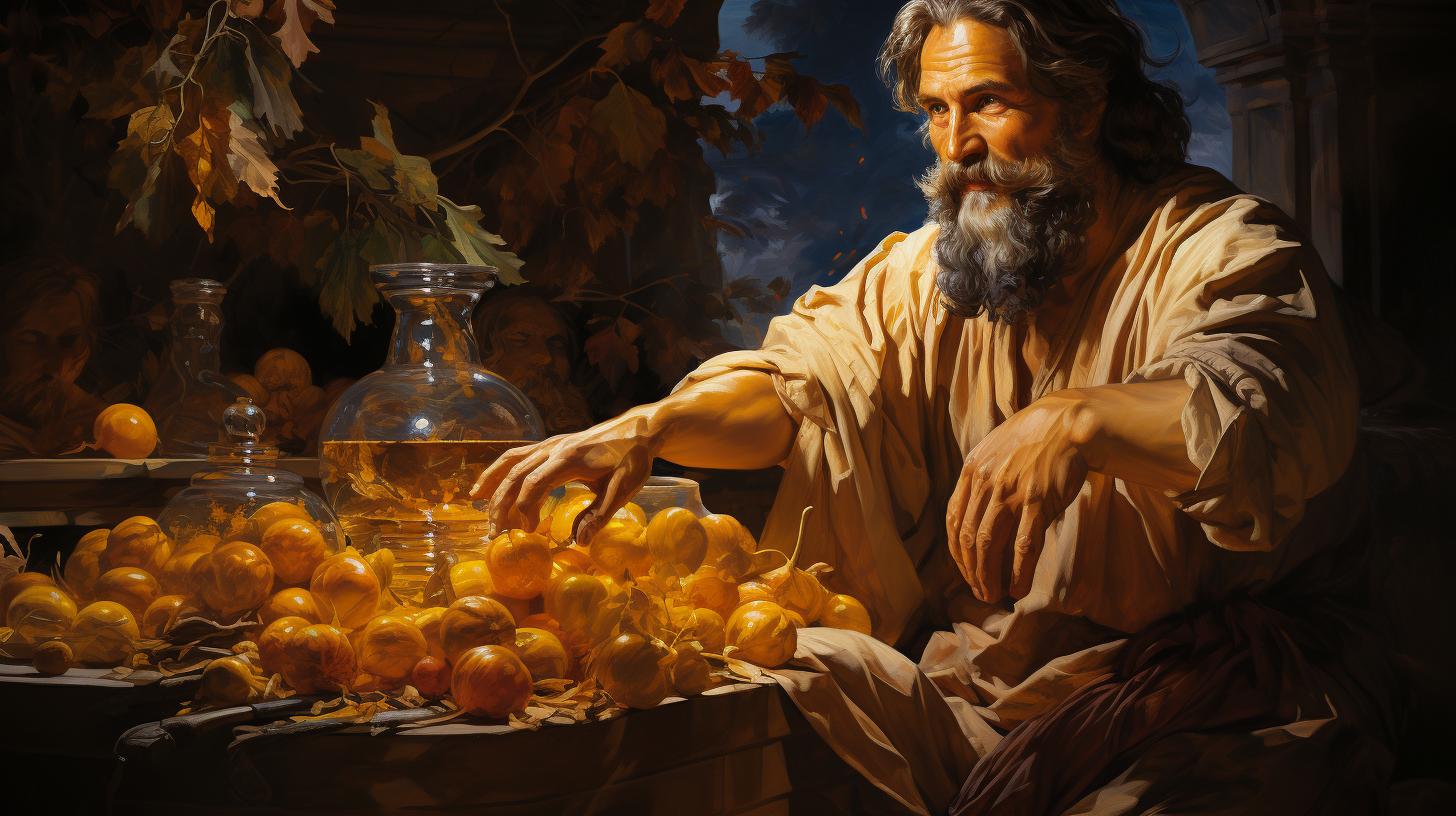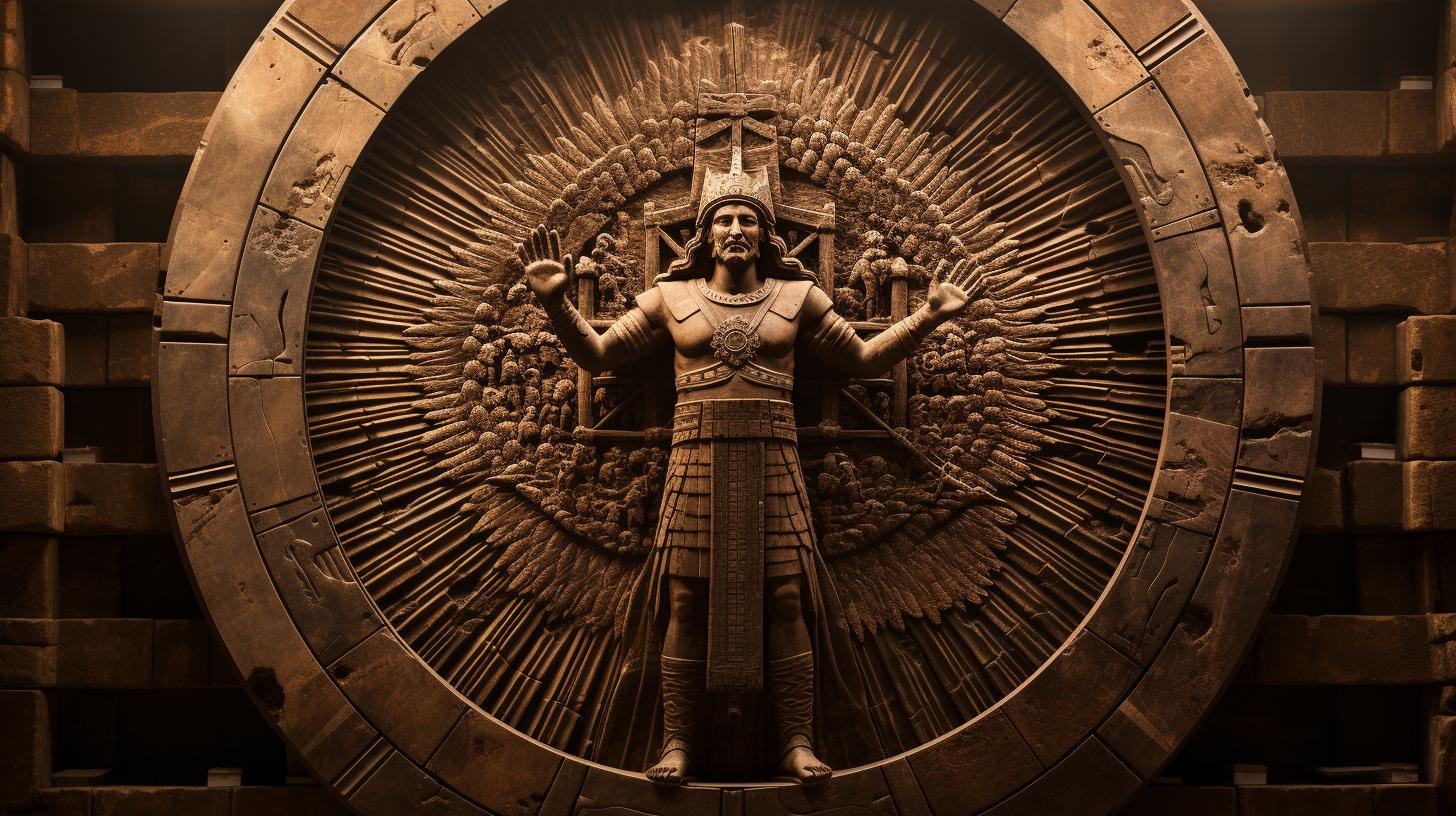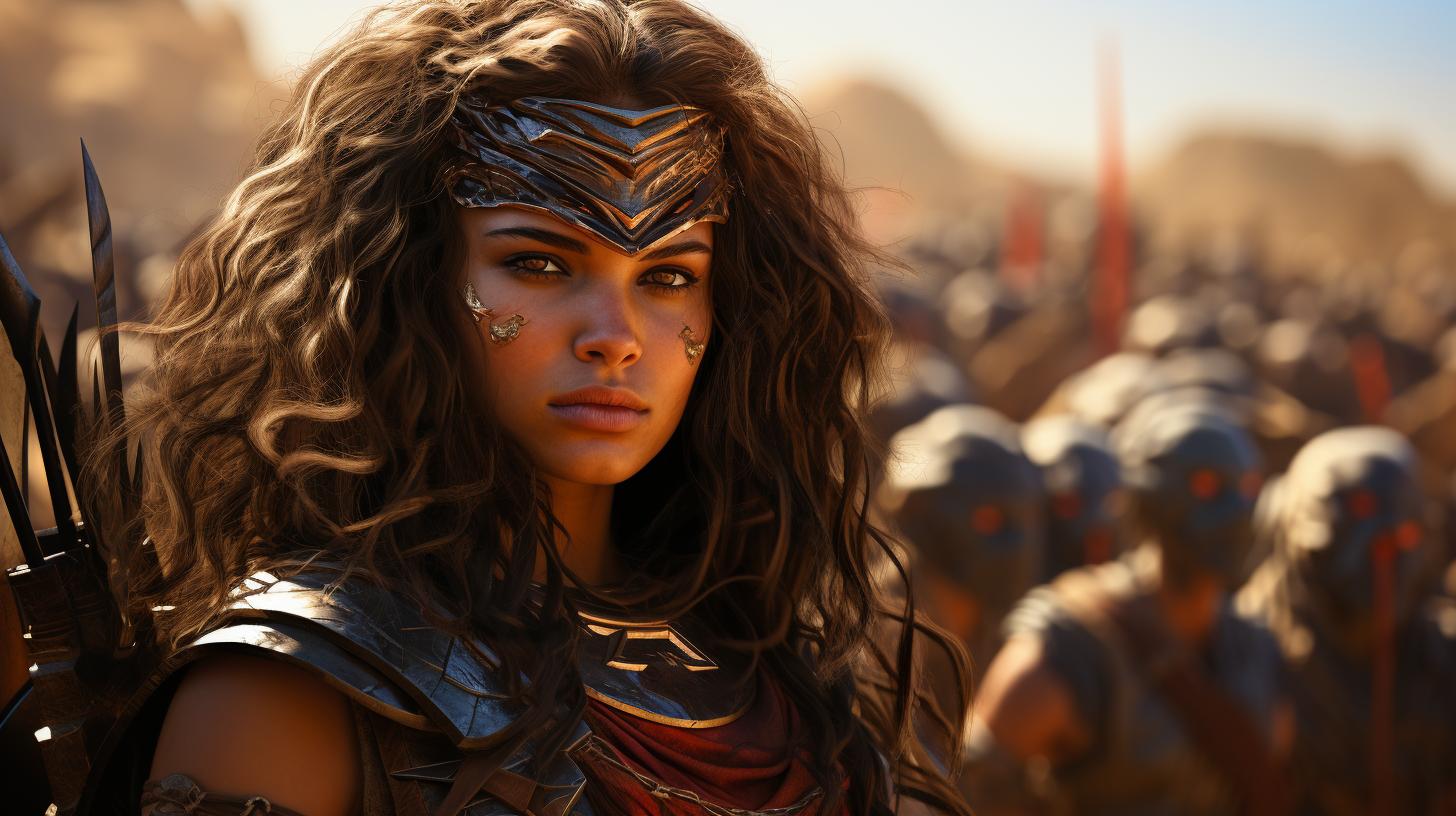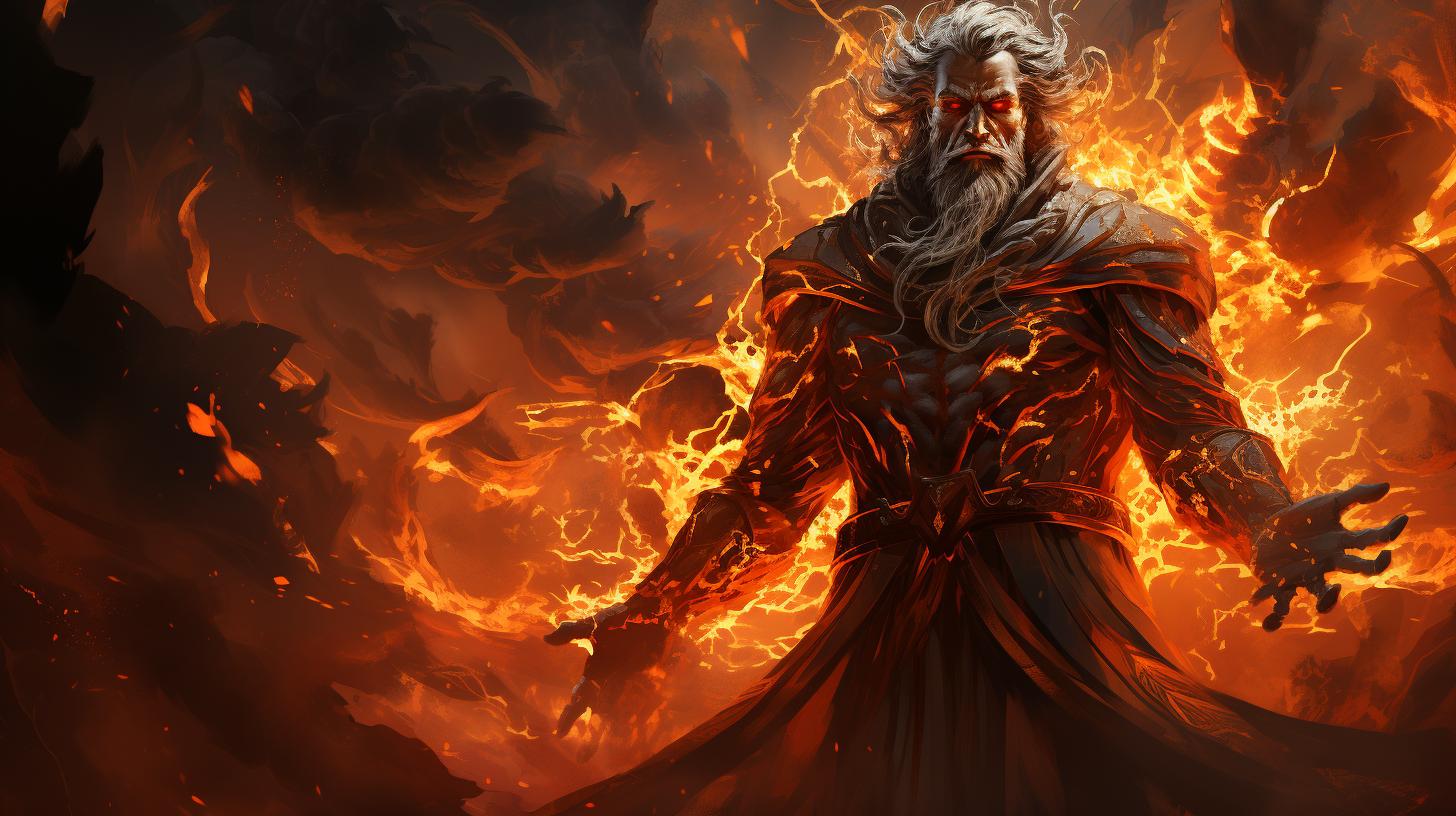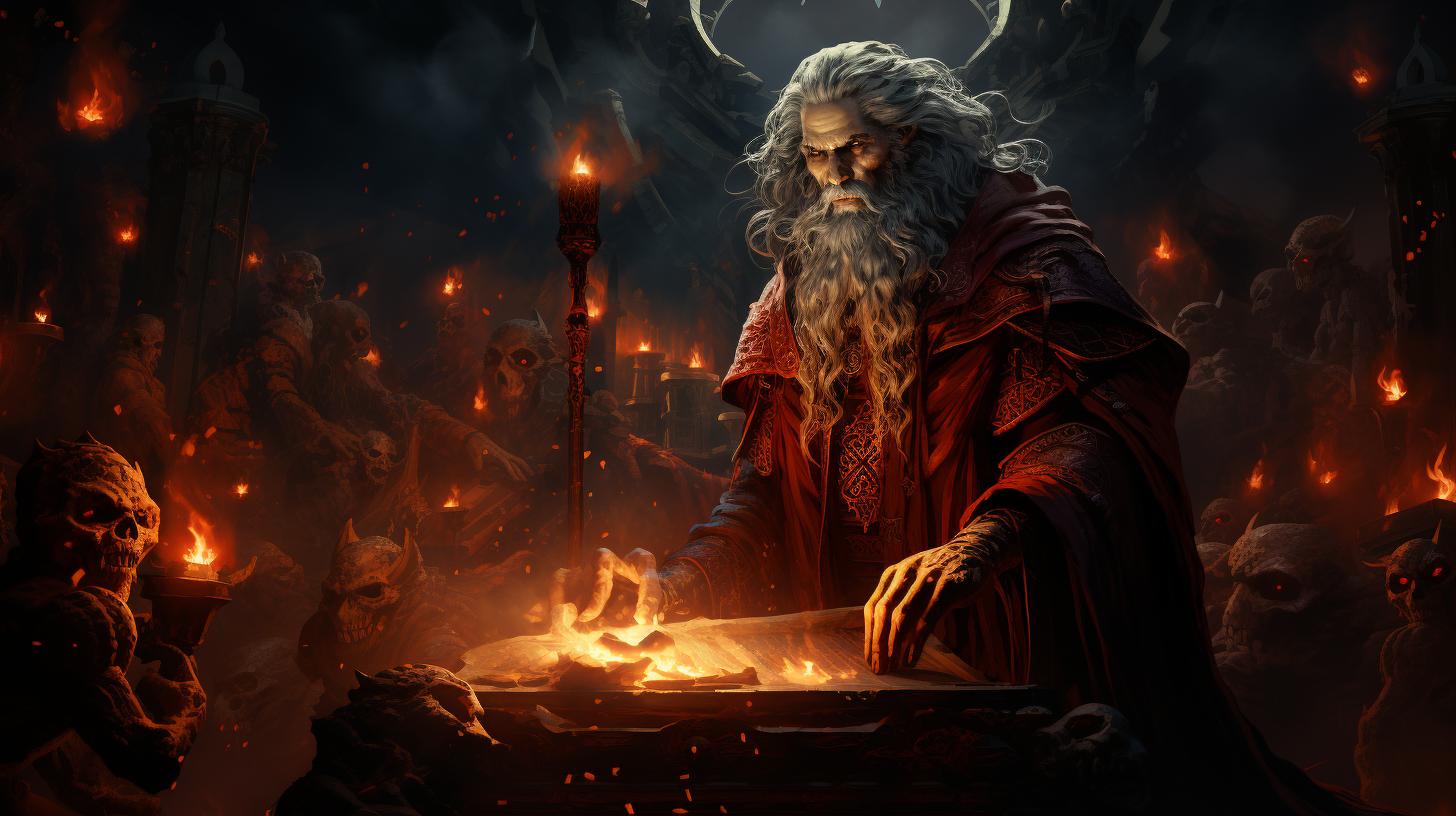Pazuzu Demon History: Unveiling the Ancient Mesopotamian King of Wind Demons
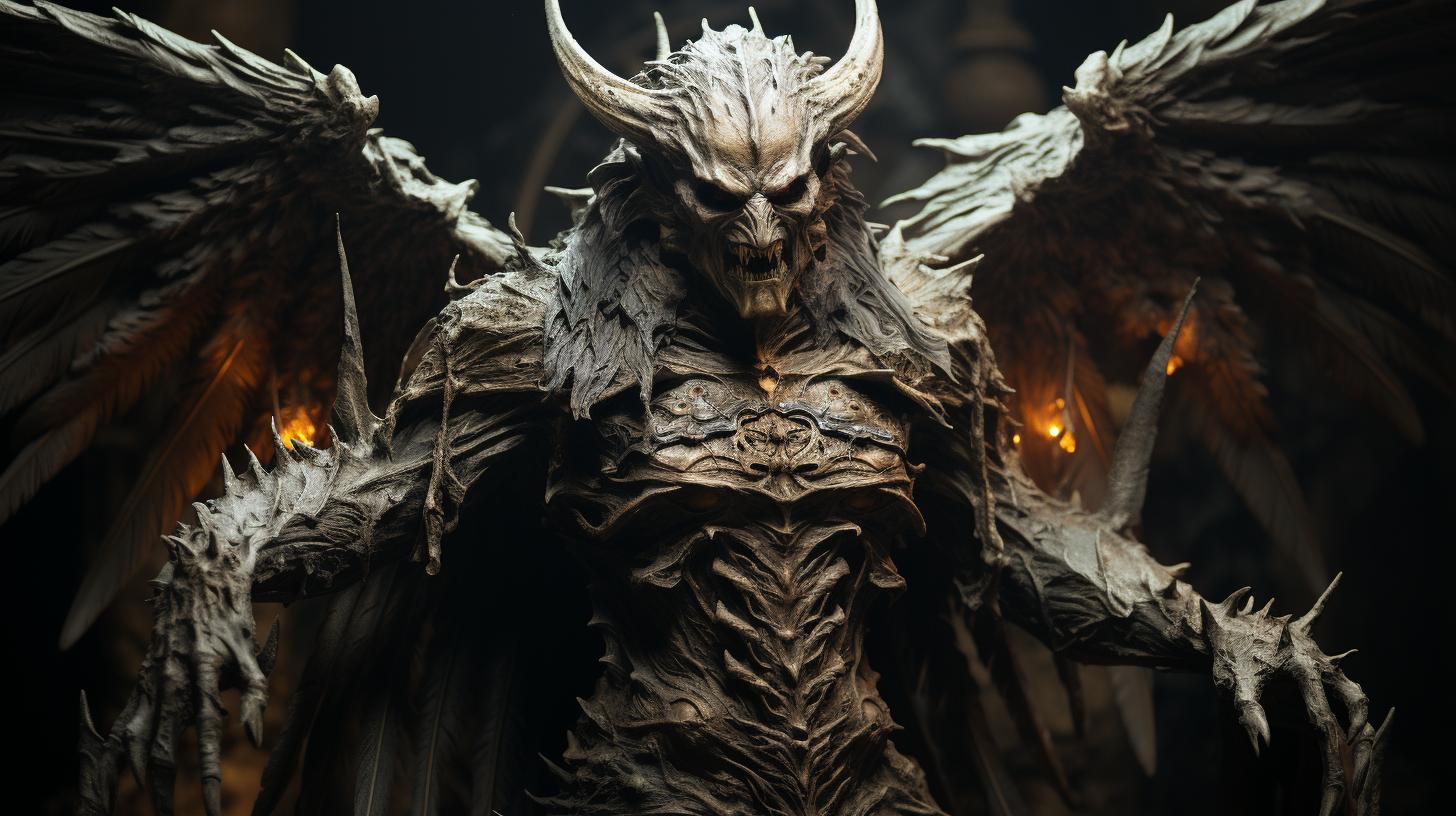
Pazuzu demon history delves into the intriguing realm of ancient Mesopotamian mythology. This article explores Pazuzu’s origins and significance, his role as a protective demon, and his monstrous appearance with human and animal features.
We also trace Pazuzu’s enduring impact, from his representation in artifacts to his association with Lamashtu, a feared demon. Additionally, we analyze Pazuzu’s presence in popular culture, particularly in the iconic horror film ‘The Exorcist.’
Uncover the enigmatic legacy of Pazuzu and his fascinating influence on modern perceptions and spiritual beliefs.
The History of Pazuzu: Unraveling the Ancient Mesopotamian Demon King
Welcome to the captivating history of Pazuzu, the ancient Mesopotamian demon king. Within this section, we will delve into the origins, significance, and cultural impact of this enigmatic figure. From his role as a protective demon in Babylonian culture to his monstrous appearance, Pazuzu’s story is one shrouded in mystery and fascination.
Origins and Significance of Pazuzu in Mesopotamian Mythology
In exploring the origins of Pazuzu, we delve into the rich tapestry of Mesopotamian mythology. Discover how Pazuzu emerged as a prominent figure associated with the winds and the forces of nature.
Uncover the significance of his role as a guardian and his connections with other deities within the ancient pantheon.
Pazuzu and the Underworld: Exploring the Relationship with Evil Gods
Delving deeper into Pazuzu’s story, we unravel his intricate relationship with the underworld and the realm of evil gods. Explore the interplay between good and evil, as Pazuzu’s unique position as a protector sheds light on the complex dynamics within Mesopotamian cosmology.
Pazuzu in Babylonian Culture: Unveiling His Role as a Protective Demon
Within Babylonian culture, Pazuzu held a significant role as a protective demon. Discover how he was invoked to ward off malevolent spirits and safeguard against supernatural threats. Unveil the rituals and amulets associated with Pazuzu, showcasing the importance of his presence in daily life and the spiritual beliefs of ancient Mesopotamians.
The Appearance of Pazuzu: A Monstrous Blend of Human and Animal Features
The visual depiction of Pazuzu is a critical aspect of his mythology. Uncover the fascinating details of Pazuzu’s appearance, characterized by a grotesque fusion of human and animal features. From his fierce talons and serpentine body to his formidable wings, Pazuzu’s terrifying form embodies his role as a powerful force in ancient Mesopotamian beliefs.
Unveil the ways in which Pazuzu’s legacy has transcended millennia and left an indelible mark on our collective imagination.
Pazuzu vs. Lamashtu: The Battle of Protective Demons
Within the ancient Mesopotamian mythos, a fierce battle raged between Pazuzu and Lamashtu, two powerful entities associated with the safety and well-being of women and children. The ancient society held deep reverence for Pazuzu as the shield against the malevolent Lamashtu, who struck fear into the hearts of pregnant women and newborns.
Understanding Lamashtu: The Demon Feared by Pregnant Women and Newborns
Lamashtu, often depicted as a female demon with a lion’s head and a donkey’s body, was believed to bring harm to pregnant women and newborns. She was feared for her insidious intentions of causing miscarriages, infanticide, and other misfortunes.
In Mesopotamian lore, Lamashtu embodied the dangers and perils that women encountered during childbirth and early motherhood.
Pazuzu as the Shield Against Lamashtu: Protective Amulets and Rituals
Pazuzu emerged as a potent force in protecting against the threats posed by Lamashtu. The imagery of Pazuzu was utilized in the creation of protective amulets and talismans, which were worn by pregnant women and placed near infants to ward off Lamashtu’s evil influences.
These amulets served as a symbol of hope and belief in Pazuzu’s ability to safeguard against the malevolence of Lamashtu.
Furthermore, ancient Mesopotamians performed rituals invoking Pazuzu’s name and powers, seeking his intervention and protection.
These rituals aimed to establish a spiritual connection with Pazuzu and reinforce his role as the defender of women and children.
The Role of Pazuzu in Honoring Women and Children in Mesopotamian Society
Pazuzu’s significance in Mesopotamian society extended beyond his protective role against Lamashtu.
He represented a broader acknowledgement and appreciation for the well-being and honor of women and children. Pazuzu served as a symbol of the community’s commitment to safeguarding the vulnerable members of their civilization.
Through Pazuzu’s association with protection and care, Mesopotamian society conveyed their respect and value for the pivotal roles played by women and the importance of nurturing the next generation.
- Pazuzu as the defender against Lamashtu’s malevolence
- Lamashtu’s threat to pregnant women and newborns
- Protective amulets and rituals invoking Pazuzu’s power
- Pazuzu’s role in honoring and safeguarding women and children
As we explore the battle between Pazuzu and Lamashtu, we gain insights into the ancient Mesopotamian society’s belief in the supernatural forces and their dedication to protecting the vulnerable.
The Legacy of Pazuzu: Discovering Ancient Artifacts and Depictions
Through the discovery of small statuettes and neo-Assyrian reliefs, we can unearth Pazuzu’s unique iconography and gain insights into how he was perceived in ancient times.
Small Statuettes and Neo-Assyrian Reliefs: Unearthing Pazuzu’s Iconography
Archaeological excavations have unearthed small statuettes of Pazuzu that provide valuable clues about his physical representation.
These intricately crafted figurines depict Pazuzu with a combination of human and animal features, evoking both fear and awe. Additionally, neo-Assyrian reliefs showcase Pazuzu as a powerful and dominant figure, reinforcing his significance in Mesopotamian belief systems.
Pazuzu and the West Wind: Exploring His Association with the Forces of Nature
One fascinating aspect of Pazuzu’s legacy is his symbolic association with the forces of nature, particularly the West Wind. This connection highlights his role as a guardian against malevolent spirits and his ability to harness the power of the wind.
Ancient depictions often depict Pazuzu with wind-blown hair and an imposing posture, emphasizing his connection with this elemental force.
Pazuzu and the Christian Influence: How His Image Changed Over Time
With the advent of Christianity, the image and perception of Pazuzu underwent significant changes.
As early Christian beliefs spread across the region, Pazuzu’s once feared and revered presence was assimilated into the realm of demonic entities. Christian influences transformed Pazuzu into a malevolent figure, often associated with evil and chaos.
Pazuzu Beyond Good and Evil: The Ambiguous Nature of His Character
Pazuzu’s character remains shrouded in ambiguity, existing beyond the realms of good and evil. In ancient Mesopotamian beliefs, he was invoked as a protective deity against the demon Lamashtu, showcasing his role as a defender of women and children.
However, his fearsome appearance and association with other demons blur the line between protector and malevolent entity, leaving us to ponder the complexities of Pazuzu’s nature.
In conclusion, the legacy of Pazuzu is rich with ancient artifacts and depictions that offer glimpses into the beliefs and perceptions of this Mesopotamian demon.
Through study and analysis of small statuettes, neo-Assyrian reliefs, his association with the forces of nature, and the influence of Christianity, we can begin to unravel the enigma surrounding Pazuzu and appreciate his enduring presence in history.
Unraveling Pazuzu’s Influence: The Modern Perception of this Mesopotamian Demon
Discovering the impact of Pazuzu in modern times opens a fascinating window into how this ancient Mesopotamian demon has shaped various aspects of our culture and beliefs. From film and pop culture to contemporary demon mythology and folklore, Pazuzu’s presence can be felt across different domains.
Delving deeper into Pazuzu’s influence allows us to gain a better understanding of his significance in the field of world history, archaeology, occult practices, spiritual beliefs, and as a symbol of ancient Mesopotamian heritage.
Pazuzu in Film and Pop Culture: Analyzing His Portrayal in ‘The Exorcist’
One notable manifestation of Pazuzu’s influence in modern culture can be witnessed in the world of film and pop culture. The renowned horror film ‘The Exorcist’ prominently featured Pazuzu as a malevolent force possessing a young girl, captivating audiences worldwide.
By examining Pazuzu’s portrayal in ‘The Exorcist,’ we can analyze the use of this Mesopotamian demon as a terrifying antagonist and its impact on the perception of Pazuzu among the masses.
Pazuzu’s Role in Contemporary Demon Mythology and Folklore
Pazuzu’s ancient origins have found their place in contemporary demon mythology and folklore. As modern beliefs and legends intertwine with ancient knowledge, Pazuzu has become a subject of interest and influence among those exploring the world of demons.
Understanding Pazuzu’s role in the realm of contemporary demonology illuminates the evolution of his character and reinforces his enduring presence in popular narratives.
Pazuzu’s Significance in the Field of World History and Archaeology
In the realm of world history and archaeology, Pazuzu’s significance cannot be overlooked.
The discovery of ancient artifacts, small statuettes, and neo-Assyrian reliefs bearing Pazuzu’s image has shed light on his deep-rooted cultural importance. Unearthing Pazuzu’s iconography and studying its historical contexts contribute to our understanding of the beliefs and practices of ancient civilizations, providing valuable insights into their spiritual and cultural landscapes.
The Impact of Pazuzu on Modern Occult Practices and Spiritual Beliefs
Pazuzu’s influence extends beyond mere mythology and history. In modern occult practices and spiritual beliefs, Pazuzu holds a unique place. His image and symbolism are often invoked and incorporated into rituals, talismans, and amulets by those seeking protection or exploring esoteric realms.
Examining how Pazuzu has permeated modern occultism highlights his enduring significance as a potent symbol and a guardian against malevolent forces.
Understanding Pazuzu as a Symbol of Ancient Mesopotamian Heritage
Lastly, comprehending Pazuzu’s significance as a symbol of ancient Mesopotamian heritage allows us to appreciate the deep cultural roots embedded within his persona.
Pazuzu represents an ancient civilization’s beliefs, fears, and protective traditions. By exploring Pazuzu’s role in honoring ancient women and children and its broader impact on Mesopotamian society, we gain a deeper appreciation for the cultural heritage that Pazuzu embodies and the stories he continues to tell.
In conclusion, Pazuzu’s influence in the modern world is multi-faceted and extends beyond an ancient demon of Mesopotamian mythology. Through his presence in film, his role in contemporary demonology, his significance within historical and archaeological exploration, his impact on occult practices and spiritual beliefs, and his representation of Mesopotamian heritage, Pazuzu has left an indelible mark on our culture, inspiring fascination and intrigue in the centuries that have followed.
…











